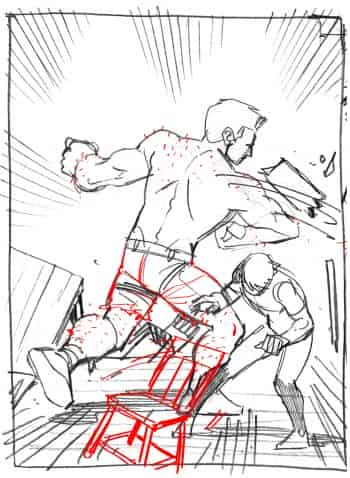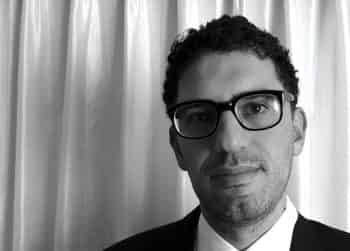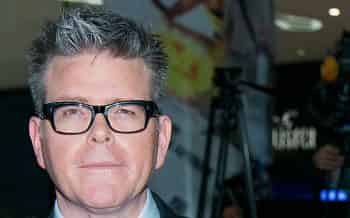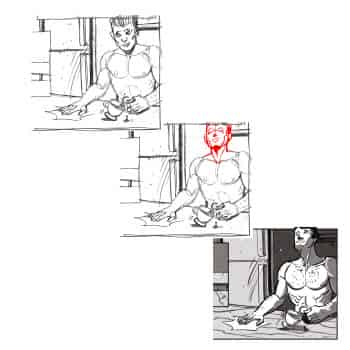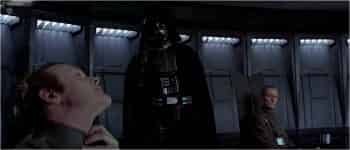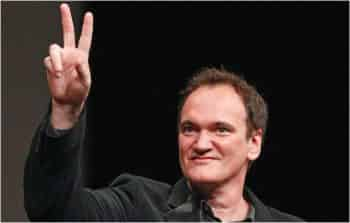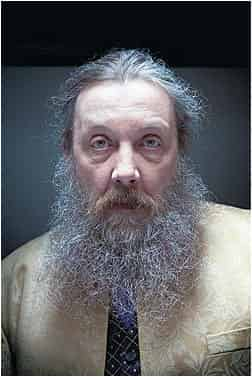Bonus
-
Touch-ups (A giant among men– Part II)
-
What to write when everything’s been said? (
We like reading about other writers’ creative processes. We came across this interview with Sam Esmail, the multitalented person behind the Mr. Robot TV series, in which he discusses his primary concern in plot development: “And I was hamstrung in the first season because I was like, well, this is really only the first act, I need this thing to happen, I need this plot, whatever, the hack thing to happen. Because for me, plot is always an excuse to explore characters. ‘Cause who cares? The plot is the same plot that we see in basically every movie and TV show. But how we tell that story, what choices these characters could make …” (Jen Chaney , Gazelle Emami and Matt Zoller Seitz. “Mr. Robot Creator Sam Esmail on How He Handles Criticism of the Show,” www.vulture.com, September 28, 2016).
This is especially interesting to read when paired with the following quote from Christopher McQuarrie, who’s had a long career as a screenwriter for the movies and, more recently, as a director. Here he talks about writing The Usual Suspects: “There’s a part of us that wants to see the bad guy get away, that wants to see this guy outsmart authority, and beat the system. That to me is when a movie is really good: when no one is an idiot. Early on in the development of the Suspects script someone asked me why Kujan was chasing this guy Keaton. What does he care? Did Keaton kill his partner? No, he’s just passionate about his job. You don’t have to be Vincent Van Gogh to be passionate about what you do […] So many movies use revenge as motivation for characters. But I think that, unless you’re analyzing the mindset itself, it’s a bad motivation.” (“Christopher McQuarrie Gets Verbal on The Usual Suspects,” cinetropolis.net, April 13, 2014).
These two quotes may come from different places, but together, they say something about how you can’t always approach characterization directly. Otherwise, verbalizing a character’s choices can take away the spontaneity and contradictions that are inherent to human behaviour.
-
Touch-ups (A giant among men– Part I)
-
Taking it slow
While rereading one of Film Crit Hulk’s comments on episode 7 of the Star Wars series (Force Awakeness) (Film Crit Hulk Smash: “STAR WARS: THE FORCE ALLUDED TO…” birthmoviesdeath.com, June 28, 2016), we highlighted several passages, but these two really stuck with us:
“HULK FEELS LIKE HULK NEEDS TO SHOUT FROM THE ROOFTOPS. THERE IS PLENTY OF “DANGER” IN THE MOVIE, BUT THERE ISN’T ANY DRAMA OR DOUBT OR ACTUAL CONFLICT BEING PLAYED. AND HE CONSTANTLY FINDS HIMSELF IN SITUATION WHERE CHARACTERS HAVE TO WASTE TIME EXPLAINING WHAT JUST HAPPENED. BUT J.J. OBVIOUSLY REALIZES THIS INFORMATION SUCKS TO DELIVER SO HE TRIES TO ZAP THROUGH EVERYTHING WITH PERSONALITY AND PIZZAZ BEFORE DISTRACTING US WITH A NEW SHINY ELEMENT OF “DANGER,” WHICH DOESN’T ESCALATE, BUT JUST CREATES THE LAW OF DIMINISHING RETURNS. AND IT SEEMS LIKE J.J. IS EVEN AWARE THAT THIS DOESN’T “WORK” SO HE’S TRYING TO STREAMLINE AND MOVE AND FIX AS QUICK AS POSSIBLE.
[…]
WAS EXPOSITION SIMPLY NOT “DELIGHTFUL” ENOUGH? DOES EXPOSITION STOP THEM FROM RUSHING THROUGH EVERY SCENE TO GET TO THE DESIRED EFFECT? HULK SORRY, BUT EFFECTIVE EXPOSITION IS ACTUALLY REALLY IMPORTANT TO MOVIES (EVERYONE MAKES FUN OF INCEPTION, BUT THE FIRST HALF OF THAT MOVIE IS WHAT ALLOWS THE SECOND HALF TO WORK WITHOUT STOPPING TO EXPLAIN ANYTHING). SO IT’S TIME TO TALK ABOUT ONE OF THE MOST IMPORTANT SCENES IN THE ORIGINAL STAR WARS.
THAT WOULD BE THE CONFERENCE ROOM SCENE. YOU KNOW THE ONE:
THIS SCENE, LIKE MANY OTHER GREAT EXPOSITION SCENES, WORKS BY UNDERSTANDING THAT, YES, EXPOSITION IS BORING IN AND OF ITSELF. BUT THAT’S WHY YOU BEND OVER BACKWARDS TO FIND WAYS TO MAKE IT INTERESTING/FULL OF CONFLICT. LIKE THE FAMOUS SNAKE PLISSKEN NEGOTIATION, THERE’S STAKES AND AN ART OF GROUNDING IT IN REAL CHUTZPAH. AND IN THIS FAMOUS SCENE, THERE’S THAT AWESOME FRAMING CHOICE WITH TWO PEOPLE ARGUING SO IT FEELS LIKE JUST AN INTENSE CONVERSATION BETWEEN THEM. THEN THE SWEEPING WAY GRAND MOFF TARKIN COMES INTO THE ROOM. AND THEN OF COURSE, THERE’S THE WAY VADER TAKES CHARGE OF THE SITUATION (WITH A GUY WHO FEARLESSLY TAKES HIM ON BY THE WAY, AN IMPORTANT HUMANIZING FEATURE FOR VADER) AND THEN ISSUES ONE OF THE MOST ICONIC LINES OF THE ENTIRE SERIES. ALL IN ALL, THE SCENE IS FLIPPING FANTASTIC.”
And that’s very true: the conference room scene worked wonderfully; however, you have to be careful not to artificially create those tensions just to make a scene more dynamic.
-
The creative process is a conversation
We all know that, today, almost every story has already been told. And art doesn’t arise out of nothingness. Writers, painters, directors and other artists create their work in communion with their environment. So we admire a director like Quentin Tarantino who’s not afraid to announce his influences.
Andrew Wheeler says it well: “Star Wars was inspired by Flash Gordon. A Song of Ice and Fire owes a debt to The Lord of the Rings. Harry Potter offers an answer to The Chronicles of Narnia. Breaking Bad takes its lead from The Godfather. Jason Bourne took shape against James Bond.
“Art exists in conversation with that which came before it, and that’s as true in comics as in any other narrative form. […]Everyone who tells stories or creates art is a critical thinker, responding to ideas with ideas of their own. There aren’t just two types of people. Makers are critics.” (“‘If You Don’t Like It, Make Your Own’ Is a Terrible Argument, but a Great Idea,” http://comicsalliance.com, September 2, 2015).
So we don’t have any hang-ups about presenting what has inspired sections of our stories, or even whole stories.
What’s troubling though is unintentional borrowing. It is possible that certain parts of a given film or novel made an impression, without us remembering it explicitly. Kate Willaert talks about this phenomenon: “Being such a huge Jack Kirby fan, is it possible Alan Moore read this story at some point and simply forgot about it? Or for that matter, could The Architects Of Fear writer Meyer Dolinksy have read it?
“A creator forgetting they encountered an idea elsewhere isn’t an uncommon phenomenon, especially in the music world. Paul McCartney has a famous story about how while writing “Yesterday,” he became paranoid that he might’ve accidentally nicked it from somewhere. After playing it for just about everyone he knew and no one saying they recognized it, he felt confident that it was completely original.” (“Did Watchmen Steal From the Outer Limits, Or From Jack Kirby?” http://www.comicsbeat.com, August 10, 2015).
In a world like ours, we really have to stop looking for plagiarism. We should admit our influences and honour them. The word plagiarism should only be applied to outright copying, and not to borrowing. Otherwise, we could never again see any of Tarantino’s movies.



